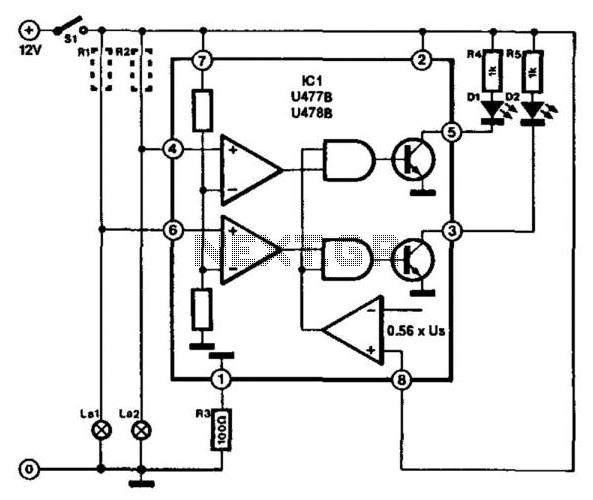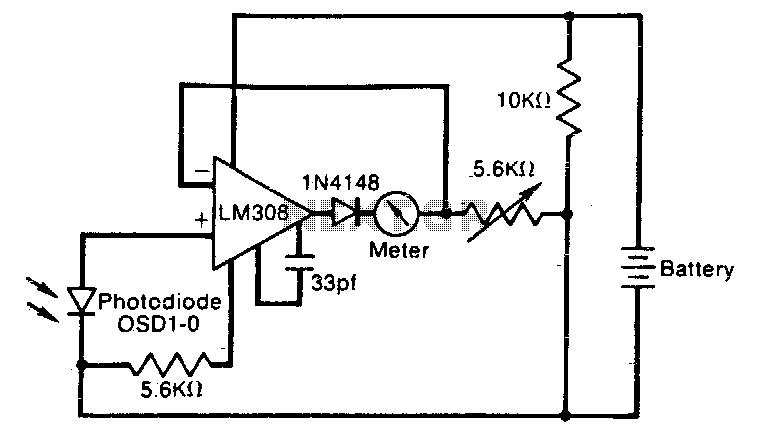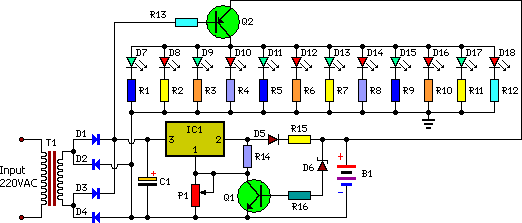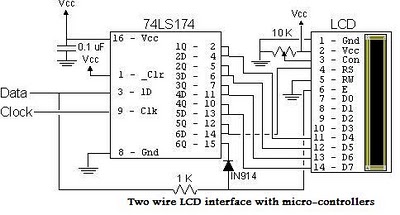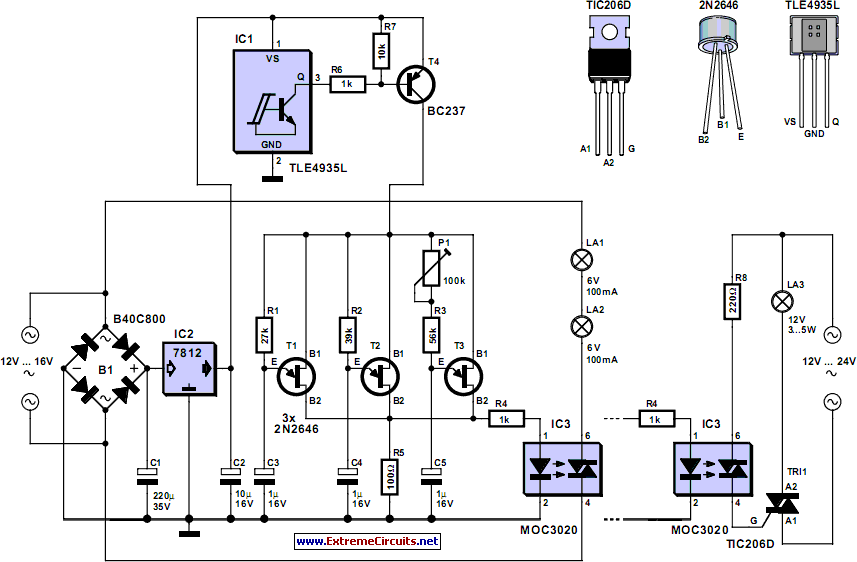
Free-Air Laser Light Communications
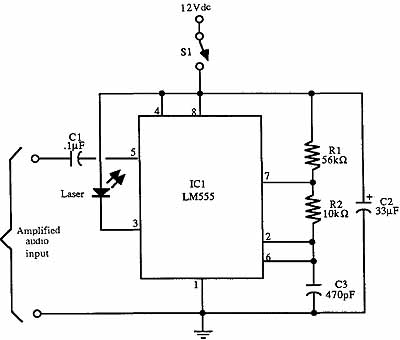
Due to the high frequency of light within the electromagnetic spectrum, it serves as a superior medium for communication compared to radio waves. Lasers are ideal for communication links because they produce a powerful and narrow beam that is minimally affected by interference and is nearly impossible to intercept. This section outlines the fundamentals of laser light communications utilizing helium-neon and semiconductor lasers. Various methods of modulating light to transmit analog signals from a microphone or FM radio will be explored. The subsequent section will detail advanced projects in laser light communications. Higher frequencies in the radio spectrum offer increased bandwidth, which is defined as the range between the upper and lower frequencies that characterize an information channel. For instance, low-frequency applications like AM radio broadcasts occupy a bandwidth of approximately 540 kHz to 1600 kHz, amounting to just over 1 MHz of bandwidth. Consequently, with 20 stations on the dial, each deejay only has about 50 kHz available. In contrast, television broadcasts, which include both VHF and UHF channels, range from 54 MHz to 890 MHz, with each channel utilizing 6 MHz. This 6 MHz bandwidth for television channels provides over 100 times more capacity for information than the AM radio band, allowing for a denser data transmission. Microwave links, which function in the gigahertz (GHz) region, are employed by telecommunications companies to transmit thousands of phone calls simultaneously. The bandwidth necessary for a single phone conversation is minimal compared to the total bandwidth available through microwave links. Visible light and near-infrared radiation have frequencies ranging from approximately 430 to 750 terahertz (THz), or 430 to 750 trillion cycles per second. The vast bandwidth at these high frequencies enables a single light beam to potentially carry all phone calls made in the United States or nearly 100 million television channels. However, this remains theoretical, as current technology does not support data transmission at frequencies exceeding approximately 25 to 35 GHz. It may take time for advancements in technology to fully exploit the potential of light beam communications. Despite these limitations, light transmission presents advantages over traditional methods. Light is less prone to interference from other signals, and when focused into a narrow laser beam, it is highly directional, making interception difficult without detection by the intended receiver. Additionally, unlike radio equipment, experimenting with high-power light links does not require Federal Communications Commission approval, allowing businesses, universities, and individuals to explore lightwave communication systems without disrupting local electronic devices, although compliance with CDRH regulations is necessary. On the downside, light transmission is significantly impacted by weather conditions and does not easily reflect off surfaces, unlike low-frequency signals such as AM radio. Understanding how laser lightwave communication links operate can begin with experiments using common and affordable visible light-emitting diodes (LEDs). An LED not only provides a visual indication of system functionality but also demonstrates the effects of collimating and focusing optics. The LED communication link, like any other, consists of a transmitter and a receiver, utilizing an LED as the transmitting component.
Laser light communication systems leverage the unique properties of lasers to transmit information over distances with minimal interference. The system typically consists of a laser diode that acts as the transmitter, converting electrical signals into light signals. These signals can be modulated using techniques such as amplitude modulation (AM), frequency modulation (FM), or pulse modulation. The choice of modulation technique depends on the application requirements, such as distance and data rate.
On the receiving end, a photodetector, typically a photodiode, captures the incoming light signals and converts them back into electrical signals. The design of the optical path is crucial, as it must ensure that the laser beam remains focused and directed toward the photodetector, minimizing losses due to divergence. Collimating lenses may be employed to maintain beam quality over long distances.
In practical applications, laser light communication systems can be used for point-to-point communication links, such as in free-space optical communication, where the laser beam travels through the atmosphere. This technology is particularly advantageous in environments where traditional wired communication may be impractical or too costly.
Overall, the development and implementation of laser light communication systems represent a significant advancement in the field of telecommunications, offering high data rates and secure transmission capabilities. As technology progresses, it is anticipated that the limitations currently faced in utilizing the full spectrum of light for communication will be addressed, unlocking new possibilities for data transmission and connectivity.Because light is at such a high frequency in the electromagnetic spectrum, it`s an even better medium for communications than radio waves. Lasers are perfect instruments for communications links because they emit a powerful, slender beam that`s least affected by interference and is nearly impossible to intercept.
This section explains the basics o f laser light communications using both helium- neon and semiconductor lasers. You`ll discover the different ways light can be modulated and cajoled into carrying an analog signal from a microphone or FM radio. The following section details advanced projects in laser light communications. Higher frequencies in the radio spectrum provide greater bandwidth. The bandwidth is the space between the upper and lower frequencies that define an information channel.
Bandwidth is small for low-frequency applications such as AM radio broadcasts, which span a range 540 kHz to 1600 kHz. That`s little more than 1 MHz of bandwidth, so if there are 20 stations on the dial, that`s only 50 kHz per deejay.
Television broadcasts, including both VHF and UHF channels, span a range from 54 MHz to 890 MHz, with each channel taking up 6 MHz. Note that the 6 MHz bandwidth of the TV channel provides more than 100 times more room for information than the AM radio band.
That way, television can pack more data into the transmission. Microwave links, which operate in the gigahertz (billions of cycles per second) region, are used by communications and telephone companies to beam thousands of phone calls in one transmission. Many calls are compacted into the single microwave channel because the bandwidth required for one phone conversation is small compared to the overall bandwidth provided by the microwave link.
Visible light and near-infrared radiation has a frequency of between about 430 to 750 terahertz (THz) ”or 430 to 750 trillion cycles per second. Thanks to the immense bandwidth of the spectrum at these high frequencies, one light beam can simultaneously carry all the phone calls made in the United States, or almost 100 million TV channels.
Of course, what to put on those channels is another thing! Alas, all of this is theoretical. Transmitters and receivers don`t yet exist that can pack data into the entire light spectrum; the current state of the art cannot place intelligent information at frequencies higher than about 25 or 35 gigahertz (billion cycles per second). It might take a while for technology to advance to a point where the full potential of light beam communications can be realized.
Even with these limitations, light transmission offers additional advantages over conventional techniques. Light isn`t as susceptible to interference from other transmissions, and when squeezed into the arrow-thin beam of a laser, is highly directional.
It is difficult to intercept a light beam transmission without the intended receiver knowing about it. And, unlike radio gear, experimenting with even high-power light links does not require approval from the Federal Communications Commission.
Businesses, universities, and individuals can test lightwave communications systems without the worry of upsetting every television set, radio, and CB in the neighborhood (however, CDRH regulations must be followed). On the down side, light is greatly affected by weather conditions, and unlike low frequencies such as AM radio, it does not readily bounce off objects.
Radar (low-band microwave) pierces through most any weather and bounces off just about everything. It`s easy to see how laser lightwave communication links work by first experimenting with a system designed around the common and affordable visible light-emitting diode. The LED provides a visual indication that the system is working and allows you to see the effects of collimating and focusing optics.
The LED communications link, like any other, consists of a transmitter and receiver. An LED is used as the 🔗 External reference
Laser light communication systems leverage the unique properties of lasers to transmit information over distances with minimal interference. The system typically consists of a laser diode that acts as the transmitter, converting electrical signals into light signals. These signals can be modulated using techniques such as amplitude modulation (AM), frequency modulation (FM), or pulse modulation. The choice of modulation technique depends on the application requirements, such as distance and data rate.
On the receiving end, a photodetector, typically a photodiode, captures the incoming light signals and converts them back into electrical signals. The design of the optical path is crucial, as it must ensure that the laser beam remains focused and directed toward the photodetector, minimizing losses due to divergence. Collimating lenses may be employed to maintain beam quality over long distances.
In practical applications, laser light communication systems can be used for point-to-point communication links, such as in free-space optical communication, where the laser beam travels through the atmosphere. This technology is particularly advantageous in environments where traditional wired communication may be impractical or too costly.
Overall, the development and implementation of laser light communication systems represent a significant advancement in the field of telecommunications, offering high data rates and secure transmission capabilities. As technology progresses, it is anticipated that the limitations currently faced in utilizing the full spectrum of light for communication will be addressed, unlocking new possibilities for data transmission and connectivity.Because light is at such a high frequency in the electromagnetic spectrum, it`s an even better medium for communications than radio waves. Lasers are perfect instruments for communications links because they emit a powerful, slender beam that`s least affected by interference and is nearly impossible to intercept.
This section explains the basics o f laser light communications using both helium- neon and semiconductor lasers. You`ll discover the different ways light can be modulated and cajoled into carrying an analog signal from a microphone or FM radio. The following section details advanced projects in laser light communications. Higher frequencies in the radio spectrum provide greater bandwidth. The bandwidth is the space between the upper and lower frequencies that define an information channel.
Bandwidth is small for low-frequency applications such as AM radio broadcasts, which span a range 540 kHz to 1600 kHz. That`s little more than 1 MHz of bandwidth, so if there are 20 stations on the dial, that`s only 50 kHz per deejay.
Television broadcasts, including both VHF and UHF channels, span a range from 54 MHz to 890 MHz, with each channel taking up 6 MHz. Note that the 6 MHz bandwidth of the TV channel provides more than 100 times more room for information than the AM radio band.
That way, television can pack more data into the transmission. Microwave links, which operate in the gigahertz (billions of cycles per second) region, are used by communications and telephone companies to beam thousands of phone calls in one transmission. Many calls are compacted into the single microwave channel because the bandwidth required for one phone conversation is small compared to the overall bandwidth provided by the microwave link.
Visible light and near-infrared radiation has a frequency of between about 430 to 750 terahertz (THz) ”or 430 to 750 trillion cycles per second. Thanks to the immense bandwidth of the spectrum at these high frequencies, one light beam can simultaneously carry all the phone calls made in the United States, or almost 100 million TV channels.
Of course, what to put on those channels is another thing! Alas, all of this is theoretical. Transmitters and receivers don`t yet exist that can pack data into the entire light spectrum; the current state of the art cannot place intelligent information at frequencies higher than about 25 or 35 gigahertz (billion cycles per second). It might take a while for technology to advance to a point where the full potential of light beam communications can be realized.
Even with these limitations, light transmission offers additional advantages over conventional techniques. Light isn`t as susceptible to interference from other transmissions, and when squeezed into the arrow-thin beam of a laser, is highly directional.
It is difficult to intercept a light beam transmission without the intended receiver knowing about it. And, unlike radio gear, experimenting with even high-power light links does not require approval from the Federal Communications Commission.
Businesses, universities, and individuals can test lightwave communications systems without the worry of upsetting every television set, radio, and CB in the neighborhood (however, CDRH regulations must be followed). On the down side, light is greatly affected by weather conditions, and unlike low frequencies such as AM radio, it does not readily bounce off objects.
Radar (low-band microwave) pierces through most any weather and bounces off just about everything. It`s easy to see how laser lightwave communication links work by first experimenting with a system designed around the common and affordable visible light-emitting diode. The LED provides a visual indication that the system is working and allows you to see the effects of collimating and focusing optics.
The LED communications link, like any other, consists of a transmitter and receiver. An LED is used as the 🔗 External reference
